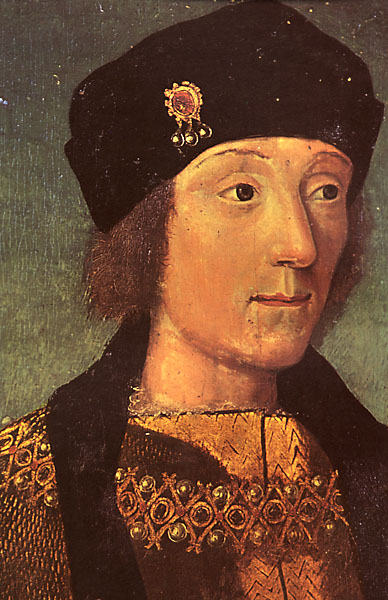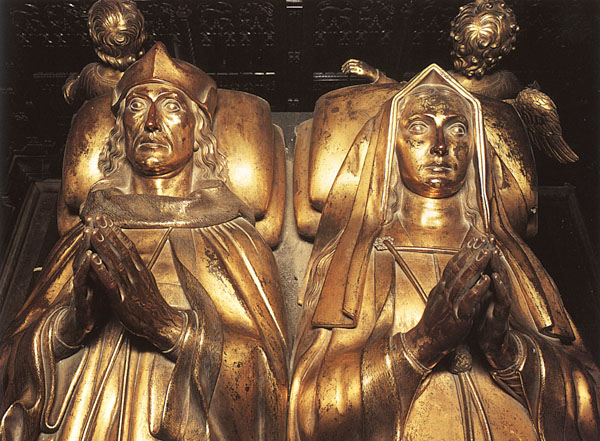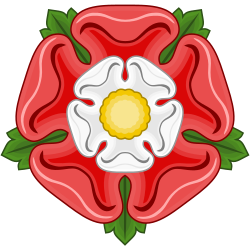530 years ago today at Westminster there took place the wedding of King Henry VII and Elizabeth of York, eldest daughter of King Edward IV.
It had been in Rennes in Brittany in the autumn of 1483 that Henry, then the Earl of Richmond and living in exile, pledged to marry Elizabeth, and he must at that time have assumed in all likelihood that her brothers the deposed King Edward V and Richard Duke of York and Norfolk to be dead

King Henry VII as a young man
Image: Wikipedia
It appears to have been a seemingly a happy marriage, the couple being mutually supportive at the time of the death of their eldest son Prince Arthur in 1502.

The oft reproduced image of the King by Michael Sitow of about 1505, and now in the National Portrait Gallery, appears to have caught him on a particularly dyspeptic day. The funeral effigy at Westminster Abbey by Torrigiano and the images that derive from it by him suggest a more gracious and dignified persona for the King.


Image: Wikipedia
Today what would it be for a Royal Wedding if there was no group photograph? Here, but some years on, is the early sixteenth century equivalent, a couple of images of the King, Queen and all their children at prayer.

From the Royal Collection at Windsor
Image:bbc.co.uk

Image:Wikipedia
Elizabeth's sisters were married off to loyal supporters of the new King and his dynastic settlement.
It appears to have been a seemingly a happy marriage, the couple being mutually supportive at the time of the death of their eldest son Prince Arthur in 1502.

The effigies of King Henry VII and Queen Elizabeth on their tomb in Westminster Abbey
Image:henrytudorsociety.wordpress.com
The oft reproduced image of the King by Michael Sitow of about 1505, and now in the National Portrait Gallery, appears to have caught him on a particularly dyspeptic day. The funeral effigy at Westminster Abbey by Torrigiano and the images that derive from it by him suggest a more gracious and dignified persona for the King.

Posthumous portrait bust of King Henry VII by Pietro Torrigiano
Taken from the death mask, and now in the V&A
Image:pinterest

Image: Wikipedia
Today what would it be for a Royal Wedding if there was no group photograph? Here, but some years on, is the early sixteenth century equivalent, a couple of images of the King, Queen and all their children at prayer.
From the Royal Collection at Windsor
Image:bbc.co.uk

Image:Wikipedia
This images poses a few interesting questions. I wonder why the main devotional scene is the Meeting of St Joachim and St Anne at the Beautiful Gate, with its implicit story of the Immaculate Conception and of a happy and fruitful marriage.
The borders are very Lancastrian and Beaufort in their emphasis. The roses are all red, whilst the portcullis badge and the daisies are for the King's mother Lady Margaret Beaufort, through whom he derived his claim to the throne.


No comments:
Post a Comment